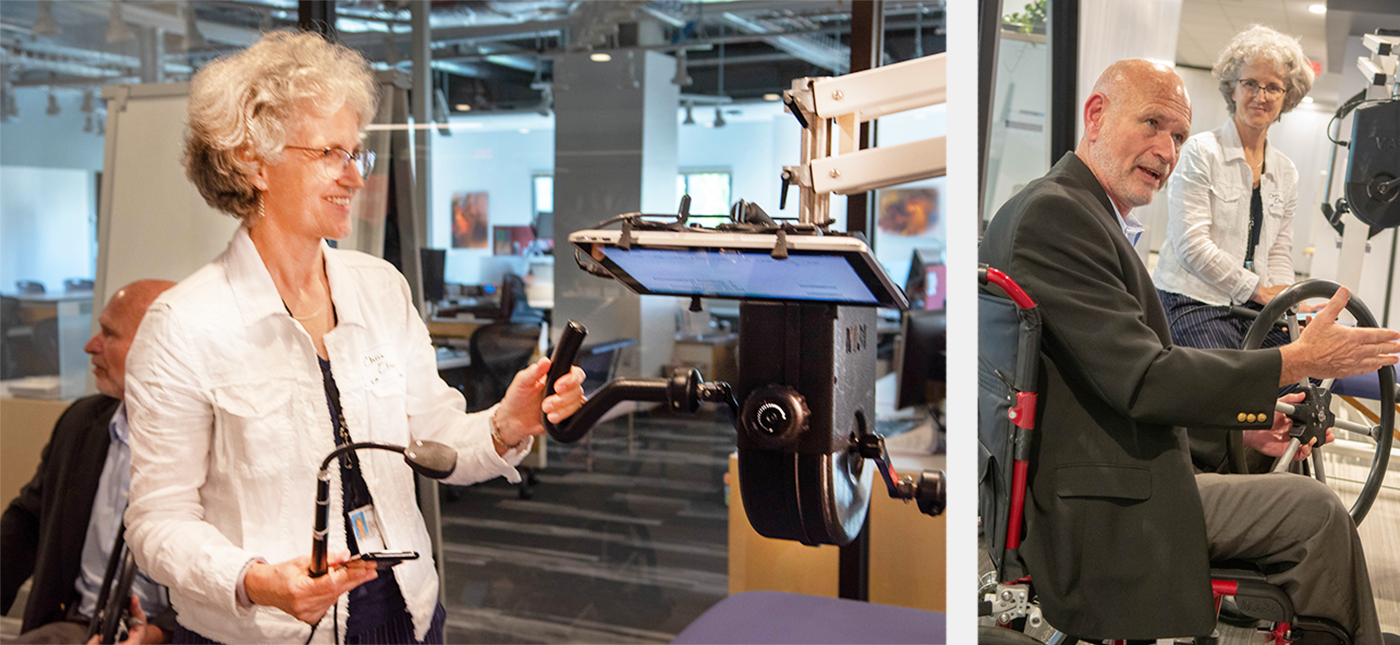Researchers and inventors from the Minneapolis Veterans Affairs’ (VA) Minneapolis Adaptive Design & Engineering (MADE) Program today showcased medical devices they have developed for veterans who are undergoing physical rehabilitation or have physical disabilities.
The devices were developed by the research team at VA-MADE, led by Andrew Hansen, PhD, and Gary Goldish, MD, who hold appointments both at the Minneapolis VA Health Care System and the University of Minnesota Medical School. The U of M and the Minneapolis VA have been formally affiliated since 1946—almost 75 years—with the VA serving one of the Medical School’s major teaching hospitals.

The event, organized by UMN Technology Commercialization and cosponsored by Bunker Labs, was intended to bring awareness to the significant adaptive technologies being developed at the VA and to connect VA-MADE designers with potential industry partners and investors with whom Technology Commercialization has regular contact. The 50 or so event attendees at the Discovery Nexus in the McNamara Alumni Center also provided valuable feedback on the potential markets and regulatory and insurance reimbursement issues for the five technologies the VA designers presented.
The five technologies displayed at the event were:
- M-PACE: A multipurpose exercise machine to help reverse negative effects of prolonged bedrest following surgery.
- SkinSyte: A device for self-monitoring difficult-to-see parts of the body that helps those with sensory loss better monitor their health.
- Ergonomic Wheelchair: A collapsible wheelchair with improved mechanics and stability that is easier for the user to move in and out of, and which allows for cleaner hands for users who propel themselves.
- Flashing IV Clamp: Forgetting to unclamp an IV is a common error. This device flashes blue when properly clamped, providing visual confirmation to help reduce errors.
- Doorway Sign: A sign that projects into the doorway, but easily swings out of the way, to communicate steps that need to be taken (such as sanitizing hands) to protect patients from infections.
For his part, Vice President for Research Chris Cramer, an army veteran who introduced the event, was excited at the usefulness of these technologies for veterans and beyond.

“Things that benefit veterans often benefit a much wider class as well, because the things that affect veterans can affect the broader population,” he told KARE-11 at the event, giving the examples of pain management and physical rehabilitation.